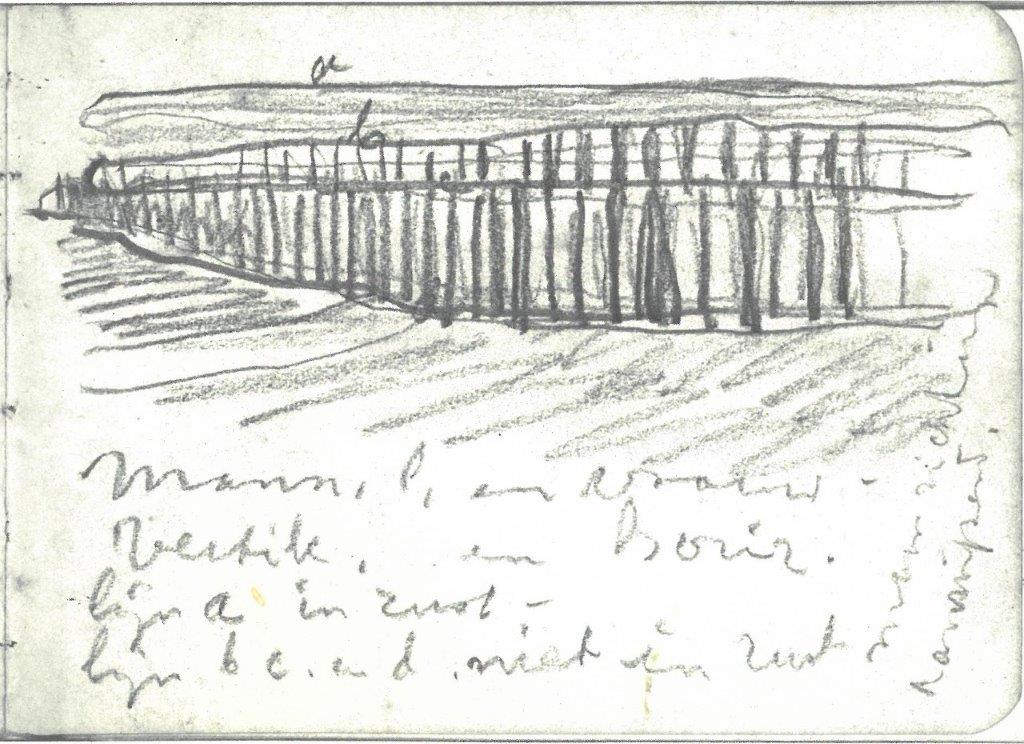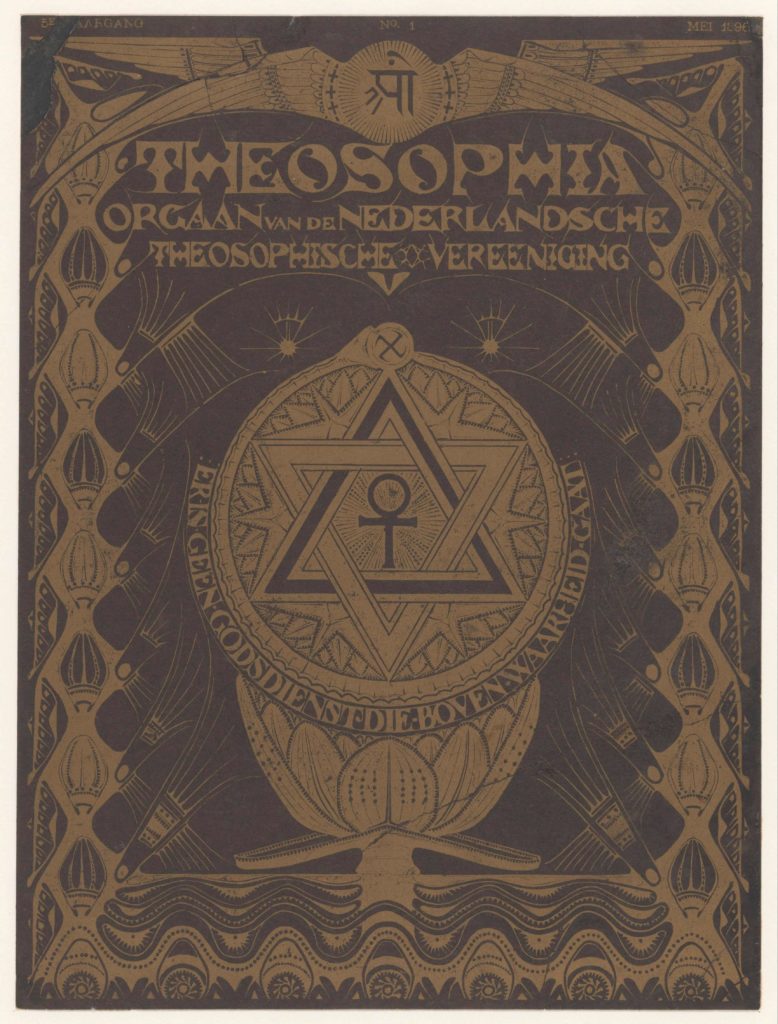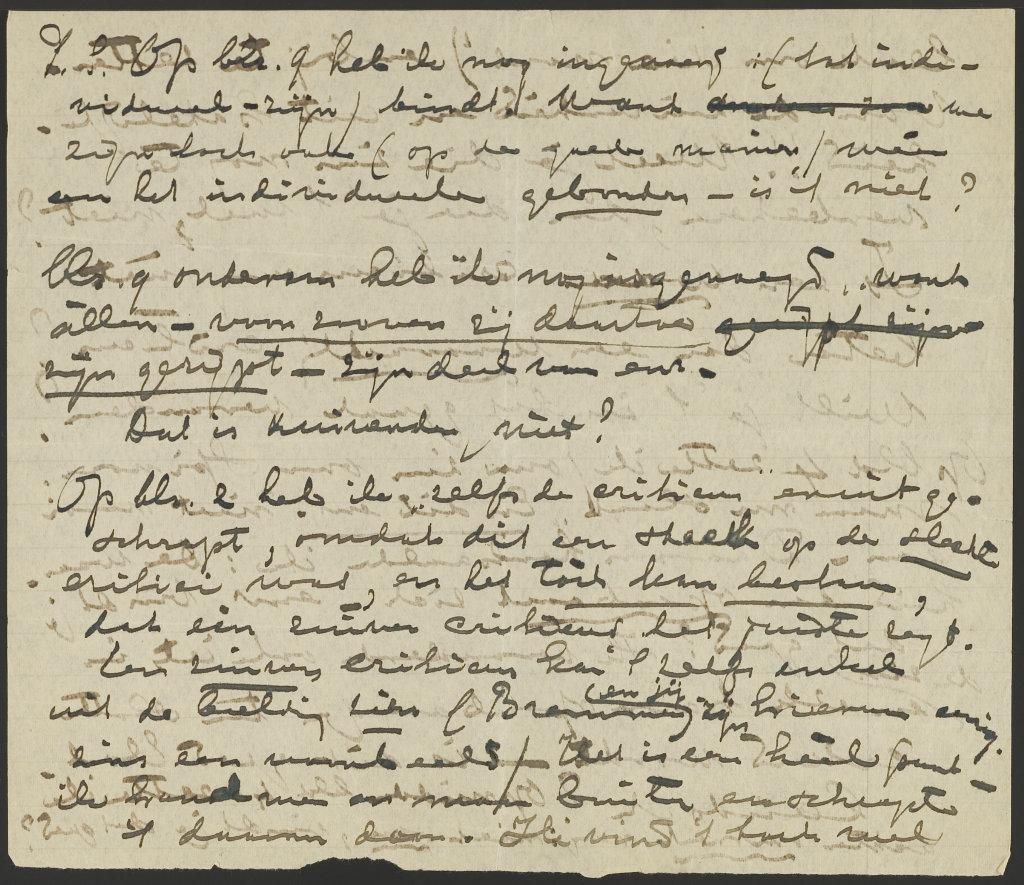by Leo Jansen

The painter Mondrian was also an author – not merely of letters but also of essays about his ideas on art. These essays more or less reluctantly took shape, for his writing did not come easily. But, as he himself wrote, ‘you have to make sacrifices for what you believe in!!’ His debut as a writer in 1917 at once became his master piece: the series of articles ‘The New Plastic in Painting’, which appeared in the first issue of De Stijl magazine. In eleven instalments with a total of approximately 33,000 words, he outlined his vision of the art of the future – a spiritual art, which would be abstract and which was to contribute to a better society. Through letters Mondrian wrote over the course of many years, we are able to trace how step by step he came to record his view on art and the significance he attributed to his authorship.
The first steps: looking for words
Years before his debut as a writer, Mondrian had already started shaping his thoughts on which direction art was to take. In 1909 he responds to a review of his work by Israël Querido in De Controleur magazine. Mondrian writes to the critic that an idea, a thought (rather than the image) ‘forms the basis of visual expression’, that there is a strong connection between philosophy and art and that the direction art will take in the future will ‘in any case’ be ‘the path ascending, away from the material’. He also explicitly states that he is trying to deepen his knowledge of the occult, without having his art reflect this, however. In short, in his letter to Querido, who printed it in its entirety in the magazine, Mondrian articulated notions that draw attention to abstracting tendencies in art and the importance of theosophy, albeit without explicitly using this term. It is by no means a well-rounded or all-inclusive conception of art: ‘I do not yet know what I shall become,’ and Mondrian is also insecure about the effectualness of his wording: ‘I only hope that I am expressing myself well’.

A first demonstration on request
The earliest proof of Mondrian’s ‘scribbling’, as he frequently refers to it, consists of notes he made in two sketchbooks dated 1914 (fig. 1). In the winter of 1913-1914, when Mondrian is living in Paris, the editors of Theosophia, the magazine of the Dutch Theosophical society – of which he had been a member since 1909 – asked him to put his thoughts on art and theosophy into writing (fig. 2). This challenge is an important moment in Mondrian’s budding authorship. Due to the complexity of the subject and his inexperience as an author, he confessed to art critic H.P. Bremmer in 1914: ‘The article has cost me a lot of effort, although I’ve been writing down my thoughts for years.’ Some of the notes in his sketchbooks could therefore possibly be linked to the text requested by Theosophia. Unfortunately we do not know what this ultimately looked like: the editors rejected the article and the manuscript has never been recovered. According to Mondrian, ‘those people’- in other words his fellow-theosophists – deemed it ‘too revolutionary’, as he wrote to his friend Lodewijk Schelfhout, to which he added: ‘That may well plead in its favour!’
Getting by with a little help from his friends
That last remark clearly shows confidence in his writing and despite its rejection, the exercise did create momentum. In the summer of 1914 – which finds Mondrian in the Netherlands, where he is to remain till the summer of 1919 because of the war – he writes to kindred spirit and friend H. van Assendelft from the town of Domburg in Zeeland: ‘I have also been writing a lot here’, which again calls the sketchbooks to mind. Mondrian decides to write ‘a book’ in order to express himself in detail on the essence, nature and purpose of the art of painting of the future. During the summer months of 1915, he dedicates all his evenings to it, and in September 1915 it appears to be all but finished. He writes to van Assendelft, with evident satisfaction: ‘It’s turned out much more complete than I thought it would.’
However, he isn’t there yet. More than six months later he offers an explanation for his tardy progress in a letter to Bremmer, in which he makes his ambitions crystal clear:
‘For a year and a half now, I have been working on a piece in which I want to say what I think about art and try to show that my work is merely a consequence of what has always been done and tried: that all past art was good and that mine arose – as a necessity – out of the spirit of a time to come, etc. etc.
To not treat something superficially – even if that is something one has done oneself – takes a lot of effort, you know that. That’s why it has taken so long. And it’s still not ready. I also write about humanity, because art and humanity are one.’
In a postscript Mondrian adds: ‘But still – I shall be glad when the writing is finished!!’
The end of the ‘slow attack’, as he calls the writing process, is still nowhere in sight. He keeps polishing his work until the spring of 1917, using comments made by Van Assendelft, who read parts of the manuscript. Others who are given the opportunity to read fragments of the text or have these read out to them, are philosopher Matthieu Schoenmaekers and artist Bart van der Leck, both fellow villagers in Laren. So although on the one hand Mondrian is convinced of the necessity of his mission, he also needs advice from and revision by kindred spirits. In the meantime, he reads the book’s preface out loud to the Lodge of the Theosophical Society at their request and ‘with debate and discussion’, but ‘folk’ were not ready for it. Mondrian realizes that his ideas are ahead of their time.
De Stijl
It is exactly this that prompts Theo van Doesburg in the spring of 1917 to ask Mondrian if he wouldn’t like to rework his book into a series of articles in De Stijl, the magazine he is founding, that was to write history. Mondrian informs Van Doesburg that he has completed ‘at least 200-250 pages that make up my book. So I’d say about a year’s worth for your magazine.’ He therefore agrees to the request, on the assumption that his book will eventually materialise anyway, and that Van Doesburg will help him find a publisher for it, for ‘although I may not be a man of letters, I set great store by my writing’. Every time Mondrian sends another chapter, Van Doesburg provides his comments, which Mondrian again receives with gratitude (ill. 3). Although nothing of the manuscript remains, the editing process can be followed from the numerous letters to Van Doesburg.

Ultimately, ‘The New Plastic in Painting’ was never published as a book, but the series of articles in De Stijl have proved hugely significant to the art and artists of his time. In the ensuing decades, Mondrian would publish his vision of art and society in numerous texts in several languages. The total of these, including a number of unpublished texts and notes, make up a substantial work which forms an integral part of his complete oeuvre. On The Mondrian Papers Mondrian’s letters will be published in conjunction with his texts, so that they offer an insight into their origins and publication history.